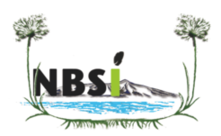Livelihoods
The Lake Naivasha Basin nowadays is believed to host about 1 million people (there are no simple means of verifying this figure). Most settled here after leaving their homes in rural areas in other parts of the country. Many belong to the Kikuyu tribe, which traditionally forms the backbone of the national farming community, but several are from western Kenya, such as the Luo, who traditionally are devote to fishing, Kalenjin (pastoralists as well as small holder farmers), Luhya and other minor tribes. Population growth in the basin has been very high, in recent years, comparable to the growth of large cities like Nairobi (ca. 9% per year), and to the fastest growing regions in the whole of Africa.
Many people moved here to seek jobs in the large horticultural industry that developed in the Basin starting from the 1980s, while many others try to open small commercial activities in the constantly growing lakeside settlements. Those who fail in obtaining employment and have no lack in business attempt to exploit natural resources such as fish, pastures, timber and firewood. However, these are already under considerable pressure by local residents; rules, as well as private and communal property rights generally determine their use. Available agricultural soil is particularly scarce. In the eastern and northern farming areas, at the foot of the mountains, farming plot size is decreasing sometimes to less than 2 acres, a size that can hardly sustain a family.
As a result of this situation, Naivasha Basin resident embrace a variety of modes of livelihood, not all of them legal and/or sustainable from the point of view of the renewability of the natural resources that make them possible.
A relatively high proportion of the population tries to fish in the main lake, both legally and illegally, supplementing this activity with other jobs. Cattle and goat herding is also on the rise, and often the animals are taken down to the lakeshore causing damage to the riparian vegetation. Game poaching is also quite common, mainly in the riparian acacia forest, while others try to open up small vegetable gardens within communal or even private land bordering the lake; an activity that represents a threat for water quality and that has been banned with a voluntary agreement by the LNRA.
To reduce impacts from unsustainable modes of living, the NBSI conducted workshops with local youth and retrained several of them from poachers into ecotourism guides and biodiversity monitors.



